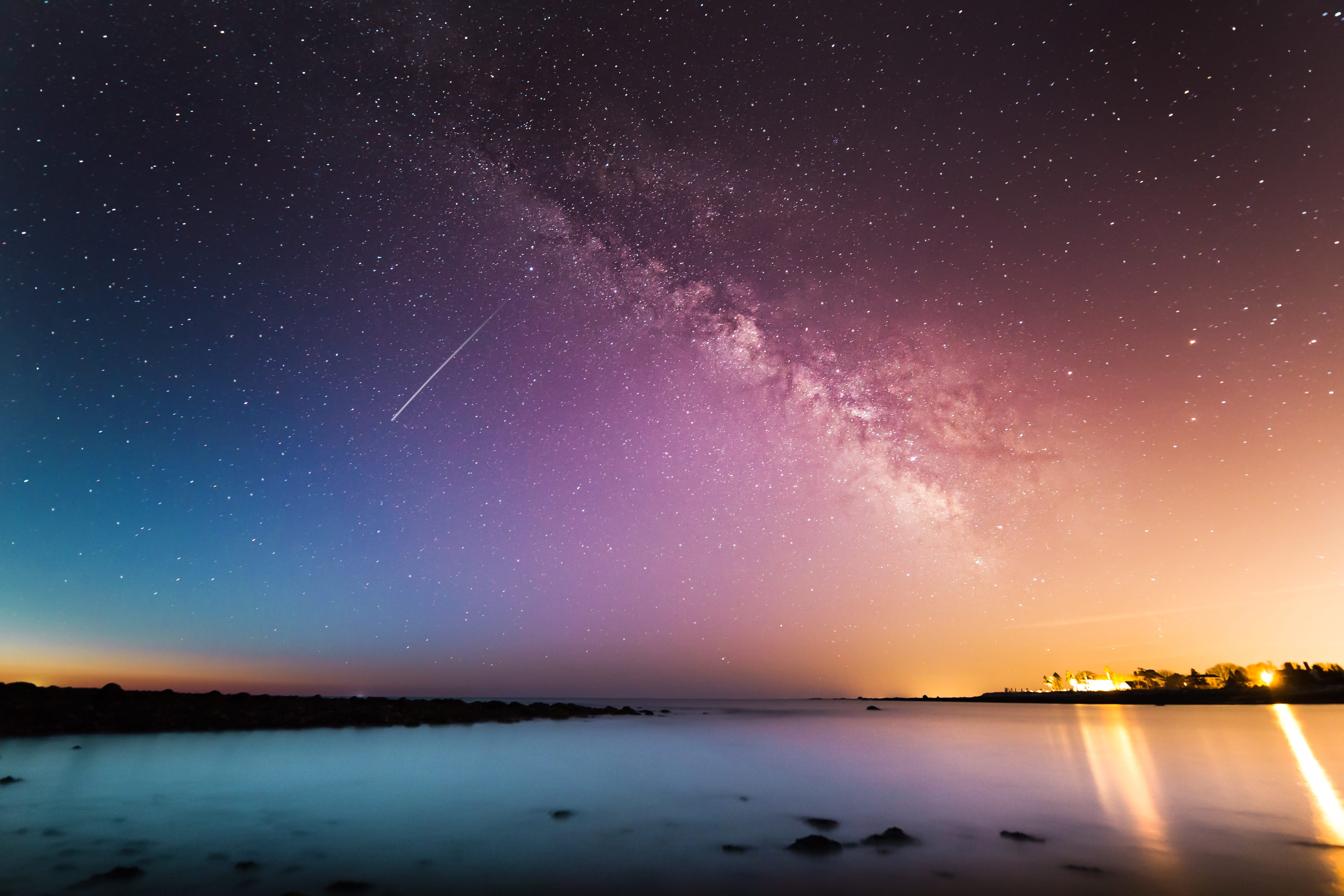
Since before recorded history, civilizations in the Northern Hemisphere have marked the arrival of winter and the longest night of the year. While in ancient times it wasn’t possible to determine the exact degree when winter officially began, this year, winter solstice occurs exactly on Friday, December 21 at 2:22 PM PST, 3:22 PM MST, or 5:22 PM EST.
The return of the Sun, or “son” in the case of Christmas, marks the winter solstice as a symbol of rebirth and reflection, and has been celebrated in various ways around the world. In Pagan Scandinavia, Yule (or Yuletide), lasted 12 days and each night honored a different aspect of the Triple Goddess and the Sun God. During Shab-e Yalda for Iranians, people gather to protect each other from evil and welcome the triumph of the Sun God Mithra. Before the Chinese New Year Dong Zhi, meaning “Winter Arrives” and is believed to be the only day where everyone gets one year older. The themes of time, darkness, and protection are also themes of the Roman Saturnalia and Christmas’ closest relative.
What is Saturnalia?
In fact, the majority of Christmas traditions evolved from Saturnalia traditions. Saturnalia, named after the God of agriculture and time, it was the most popular Roman holiday known for its riotous ways. Between December 17 and December 24 people exchanged gifts and offered acts of goodwill. Not only were there feasting and dancing but according to writings from several philosophers at the time, many enjoyed major drinking and gambling. So much so that some of them would leave the city, during the week-long festival, even Pliny the Younger whose name doesn’t seem to make it obvious that he was a bit of a Scrooge.
In some parts of Rome, there would even be role reversals where the wealthy would pay for the rents of the poor or children would get to be head of the household. (Um, can we reinstate the rent tradition somehow, pretty please?)
As the Romans began invading the rest of Europe, the traditions of Saturnalia became more of mainstay and evolved into Christmas. Though by the fourth century A.C.E. (after common era), Western Christian Churches decided on December 25 and combined the Pagan midwinter and Saturnalia. Now, we seem to celebrate a bit of a combination of both.
However, in ancient Rome and astrologically speaking, Saturn technically is the reason for the season.
Solstice and Saturn
Winter begins as the Sun moves into the Saturn-ruled, tropical zodiac sign Capricorn. In this way, understanding the archetypal energy of Saturn and Capricorn can help us move into the winter season with more grace and ease.
As the last planet visible with the naked eye, Saturn rules the aspects of the Earthly domain that feel predictable, steady, and ground us in reality. It connects us to slowness and the wisdom that comes with time. Like all planets and signs, Saturn and Capricorn have both positive and negative and reveal themselves differently in different people. In an elevated expression, Saturn sets clear boundaries, commits readily to people and projects, and works hard. Though in its detrimental expression can be overly rigid, judgmental, or cold (like the season itself).
Saturn in our natal astrology chart can give us clues about aspects of our legacy and life purpose while directing us to what we are truly committed to. It moves more slowly than Venus, Mercury, or Mars so it will be in the same place for those born within a few years of each other, though that doesn’t make it less important to individuals. Additionally, those with strong Saturn or Capricorn in their natal chart may recognize the patterns of the season in themselves more so than others. (I’m willing to bet money Scrooge had a strong dose of this in his chart.)
How to Harness Saturn Energy
Behaviors of Saturn pull us into hibernation or isolation though often in service of maturity or grounding. Though Saturn is a dense planet and reminds us of the heaviness and depression that sometimes comes with this season as well. We can also notice its influence when we feel the urge to create more structure or discipline in our lives—such as the case with New Year’s resolutions. Other suggestions for cozying up with Saturn this winter season:
- Build an altar to the North, the direction of Saturn, with symbols of the season such as candles, holly, or mistletoe. Because winter solstice was also a time of honoring the rebirth of the Sun, using gold or yellow candles are helpful reminder of this symbolism. Perhaps offering a prayer of rebirth and reflection for the new season.
- Practice mountain pose as the foundation of asana practice and for this reason also signifies the grounding and stability of winter. The steadiness of the posture emulates the focus and strength of Saturn itself. Pay extra attention to the feet in this posture as the foot chakra is associated with Saturn.
- Learn more about Saturn in your natal astrology chart, specifically if it has major aspects to your Sun or Moon or if have any major transits of Saturn to your chart (and if you don’t what this means, no worries). While the “Saturn Return” has been popularized, be wary of anything you read that makes it seem all doom and gloom. Just like winter, Saturn has both good and bad.
- Perhaps Saturn’s greatest gift is that of understanding our legacy as well as what we have inherited from our past. Connecting to the family tree can be a meaningful ritual during this season for revitalizing your ancestral roots. The holidays are often filled with traditions that have been passed down by generation, pause to think about what you want to leave as legacy for your future ancestors.
However you choose to celebrate this Season of Saturn, may it be filled with warmth and internal light on the darkest night.
Holiday special with the author! Two astrology readings for $250, more info here.
—
 Rebecca Farrar completed her M.A. at the California Institute of Integral Studies in the Philosophy, Cosmology, and Consciousness (PCC) program. Her thesis was titled “Stargazing: Re-enchantment Through Language,” combining philology, consciousness studies, and enchantment with the stars. She has studied with archetypal astrologer Rick Tarnas, cosmologist Brian Swimme, activist Joanna Macy, and psychotherapist Stan Grof. Other influences include C.G. Jung, Owen Barfield, Bill Plotkin, Marianne Woodman, Thomas Berry, and Clarissa Pinkola Estes. I was also a founding member of Burning Man’s first astrological camp, Cosmicopia. Most recently I am featured in an upcoming documentary Conscious: Fulfilling Our Higher Evolutionary Potential and the She Wolfe Tarot deck. She is a member of the International Society for Astrological Research (ISAR), the San Francisco Astrological Society (SFAS), the Association for the Study of Women and Mythology (ASWM), and the Depth Psychology Alliance (DPA). Follow her on Instagram.
Rebecca Farrar completed her M.A. at the California Institute of Integral Studies in the Philosophy, Cosmology, and Consciousness (PCC) program. Her thesis was titled “Stargazing: Re-enchantment Through Language,” combining philology, consciousness studies, and enchantment with the stars. She has studied with archetypal astrologer Rick Tarnas, cosmologist Brian Swimme, activist Joanna Macy, and psychotherapist Stan Grof. Other influences include C.G. Jung, Owen Barfield, Bill Plotkin, Marianne Woodman, Thomas Berry, and Clarissa Pinkola Estes. I was also a founding member of Burning Man’s first astrological camp, Cosmicopia. Most recently I am featured in an upcoming documentary Conscious: Fulfilling Our Higher Evolutionary Potential and the She Wolfe Tarot deck. She is a member of the International Society for Astrological Research (ISAR), the San Francisco Astrological Society (SFAS), the Association for the Study of Women and Mythology (ASWM), and the Depth Psychology Alliance (DPA). Follow her on Instagram.